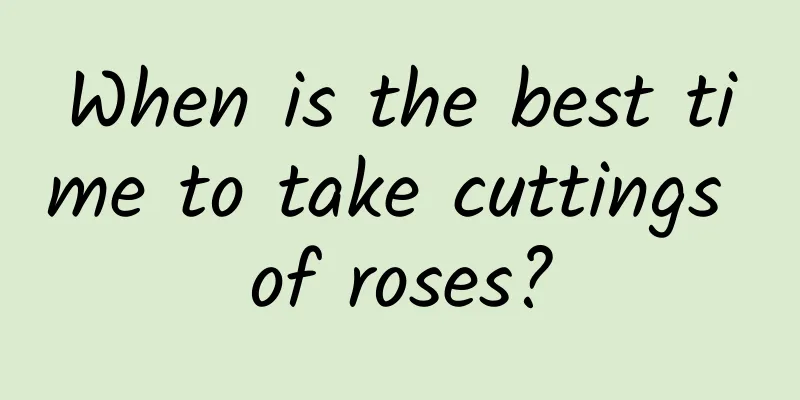Key points for managing the plum garden

|
Prune is a new hybrid variety between apricot and plum. It is bred through many generations of hybridization of apricot and plum. Its fruit has a unique rich and fragrant aroma and is one of the emerging fruit varieties with the best market prospects. Below, the editor will introduce the key points of plum garden management, let’s take a look. 1. Fertilizer and water management Young trees need to be fertilized frequently and thinly, with nitrogen fertilizer being the main fertilizer during the growing period. After the leaves fall, the soil should be deep plowed and organic fertilizer should be added. Fruit trees should be fertilized 3-4 times throughout the year. Flower-promoting fertilizer should be applied around late March and water should be irrigated before flowering. Fertilizer should mainly be quick-acting nitrogen fertilizer, and attention should be paid to supplementing elements such as phosphorus, potassium, boron, and zinc. During the fruit expansion period, watering should be done to promote fruit expansion. Fruit-enhancing fertilizer should be applied around late May. In addition to potassium fertilizer, calcium, magnesium and other elements should also be supplemented. After harvesting the fruits, topdressing should be mainly with balanced quick-acting fertilizer to restore tree vigor and promote flower bud differentiation. Apply base fertilizer before leaf fall, mainly with decomposed organic fertilizer, combined with calcium magnesium phosphate fertilizer, combined with deep soil plowing and application. Foliar topdressing is mainly concentrated in the flowering and fruiting period. During the flowering period, boron source pool + phosphorus and potassium source pool can be used, or directly spray full-function sea elf foliar fertilizer , etc. During the fruit expansion period, spray red pool to promote expansion growth. 2. Plastic and pruning The trunk of young trees is usually set at around 60cm, and a delayed open-heart shape is often used. Three main branches are selected in the first layer, with a layer spacing of 70-80cm. The second layer has two main branches, and the upper layers are open-heart-shaped. During winter pruning, you should try to do as little branch thinning as possible and pull branches to open the angles. You only need to thin the back branches, competing branches, overgrown branches, dead branches, and diseased and insect-infested branches. For extended branches, generally leave them short at 50-60cm to increase the amount of branches. Fruit-bearing trees should be pruned back in time, and the weak branches after fruiting should be removed in time to strengthen the branches and enhance their fruiting ability. 3. Flower and fruit management Plums have large quantities of flowers, high fruit set rates, and large fruit shapes, so it is necessary to ensure adequate supply of water and fertilizer. During the flowering and fruit swelling periods, root and foliar topdressing must be done in time. For details, please refer to the fertilizer and water management section. In addition, pay attention to reasonable fruit thinning. 15 days after the flowers fade, when the young fruits grow to the size of broad beans, the first fruit thinning should be carried out. First, all diseased, insect-infested, deformed and small fruits should be removed, and then the overcrowded young fruits should be removed, leaving one fruit every 5-6 cm. The second fruit thinning should be carried out before the hard core stage, leaving one fruit at an interval of 8-10 cm so that the remaining fruits are evenly distributed on various parts of the tree. 4. Disease and pest control There are relatively few diseases and pests of plums. The focus is on preventing bacterial borer, scale insects, plum bees, plum borers and leaf rollers. Pay attention to winter garden cleaning and prevention during the growing season. In spring from late March to mid-April, aphids often damage young shoots, causing them to stop growing. They can be sprayed with 1000-1200 times diluted 40% Lekote wettable powder for prevention and control. Pear borer usually starts to cause damage in June and July. You can use 1500 times spray of 50% cypermethrin emulsion, which has a good killing effect on eggs and emerging adults. The above is an introduction to the key points of plum garden management. Plums have the phenomenon of fruit cracking before harvesting. During the fruit ripening period, you can cover the tree circle or between the rows with film or ground cloth, or dig channels around the tree circle to divert water. In the rainy season, drain the accumulated water in the tree circle in time to reduce the concentration and stagnation of water, so as to prevent or reduce the occurrence of fruit cracking.
|
<<: Why is it difficult for a single orchid seedling to survive? How to cultivate it to survive
>>: How to raise a single orchid seedling and how to make it germinate early
Recommend
How to raise Qingli
Watering Compared with other plants, Qingli is a ...
How to graft roses with buds
Variety selection Regardless of the grafting meth...
If you make a small move, the flower will be killed.
1. Place the flowers on the floor heating or near...
Agave cultivation methods and precautions
1. Breeding methods 1. Temperature: The most suit...
How to cultivate wild chrysanthemum
1. Soil It is best to choose permeable and fertil...
The difference between the red powder stage and the blue powder stage
color Under sufficient light, the leaves of the R...
How to grow boxwood
1. Breeding environment 1. Soil: Boxwood has very...
What flowers are suitable for growing in Zhangye? What are the city flowers and trees?
1. Climate characteristics of Zhangye Zhangye is ...
How do white palm leaves turn from yellow to green?
1. Increase lighting Although it likes a semi-sha...
How to grow rainbow jade in autumn
1. Increase nutrients Its peak growing season is ...
What is bitter vegetable?
What is bitter vegetable? Dandelion is the young ...
How to water osmanthus during flowering period, and management matters during osmanthus flowering period
1. Watering method The watering methods during th...
How to propagate coleus by cuttings
Time for cutting of coleus There are two methods ...
Which month is best for sowing chives?
When it comes to vegetables that can be picked an...
Peony planting per mu yield and profit Peony planting technology and per mu yield
Peony root is a commonly used Chinese medicine, w...









